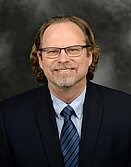A place vulnerability analysis of flood hazard risk at Grand Forks: 1990-2010

Melissa Wygant is a Master of Science student in the Geography program at University of North Dakota. She holds a Bachelor of Arts degree in Geography and minor in Studio Art from Gustavus Adolphus College, Minnesota. Her present research is focused on understanding changes in flood risk and vulnerability over time, using Geospatial techniques.
Email: melissa.wygant@my.und.edu
Fellow: Melissa Wygant
Advisor: Paul Todhunter, Ph.D., Professor, Department of Geography, University of North Dakota.
Degree Progress: M.S. in Geography expected graduation in spring 2014.
A place vulnerability analysis of flood hazard risk at Grand Forks: 1990-2010
- Flooding is the most common and pervasive natural hazard in the United States, causing extensive damage and economic loss each year. Flood damages in the United States have continued to increase significantly over the past 200 years, causing loss of life, affecting untold millions of people, and inflicting billions of dollars in direct and indirect economic losses.
- Communities along the Red River Valley of North Dakota have a long history of flood damages. Grand Forks and the Fargo-Moorhead metropolitan area have experienced extensive flooding for over 100 years. In 1997 the Grand Forks community experienced a catastrophic flood and the Fargo-Moorhead metropolitan area narrowly escaped similar catastrophic flood damages on multiple occasions during the 2000s, while Minot and Bismarck suffered extensive flood damages in 2011. Avoiding a recurrence of a flood disaster similar to the 1997 flood at Grand Forks is crucial to the sustainability of all of North Dakota’s major metropolitan areas.
- The purpose of this study is to evaluate flood hazard risk and vulnerability at Grand Forks, North Dakota from 1990-2010 prior to and following completion of their U.S. Army Corps of Engineers certified $420 million levee system to identify the extent to which flood risk has actually been reduced over time. A place vulnerability approach will be used as the organizing framework to provide a quantitative spatial assessment of flood risk over time.
Project Objectives:
- Develop georeferenced maps of flood risk in Grand Forks prior to and following the completion of the USACE levee system;
- Quantify and map social vulnerability at the census tract level for three U.S. Census periods;
- Use a GIS to quantify and map place vulnerability in Grand Forks for three time periods-1990,2000, and 2010;
- Identify the extent to which biophysical vulnerability, social vulnerability, and place vulnerability have changed in Grand Forks over the 20 year study period;
- Provide an objective and spatially-based evaluation of how actual flood risk changed following the 1997 flood disaster.
Progress:
The applicant is in her second semester of graduate research currently working on gathering census tract data and floodplain maps to assess changes in flood risk and vulnerability.
Anticipated results and benefits:
It is anticipated that the place vulnerability maps will show a reduction in flood risk over time due to the implementation of the dike system, and other various mitigation strategies, but reveal that substantial residual risk is still present within Grand Forks. This should be helpful to city leaders in Grand Forks and other North Dakota communities who are responsible for building more flood-resilient communities.
Thesis:
A Place Vulnerability Analysis of Flood Hazard Risk at Grand Forks: 1990-2010
Conference/Seminar Presentations:
Poster Presentation: 38th Annual Natural Hazards Research and Application Workshop* Broomfield, Colorado: “A Place Vulnerability Analysis of Flood Risk and Vulnerability in Grand Forks, North Dakota: 1990-2010.” Melissa Wygant, Paul Todhunter, Michael Niedzielski, and Jeffrey VanLooy. University of North Dakota. July 13-16, 2013.
Poster Presentation: North Dakota GIS Conference* Grand Forks, North Dakota: “A Place Vulnerability Analysis of Flood Risk and Vulnerability in Grand Forks, North Dakota:1990-2010.” Melissa Wygant, Paul Todhunter, Michael Niedzielski, and Jeffrey VanLooy. University of North Dakota. September 10-12, 2013.

Paul Todhunter
Geography & Geographic Information Science
Office: O'Kelly Room 163
Grand Forks, ND 58202-9020
Telephone: 701-777-4593
Email: paul.todhunter@UND.edu


